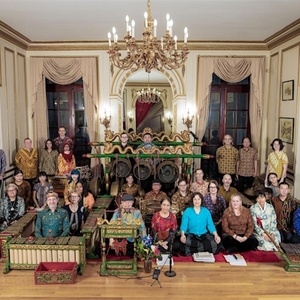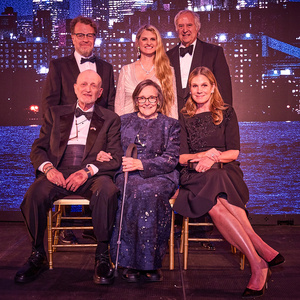
At a Glance
Time Needed: 180 min.
Ages: All
Allows Food/Drink: No
Luggage Storage: Yes
1000 5th Ave, New York, NY 10028 Get Directions
Metropolitan Museum of Art Videos
Subscribe for new content from The Met: https://www.youtube.com/user/metmuseum #TheMet #Art #TheMetropolitanMuseumofArt #Museum © 2025 The Metropolitan Museum of Art
Beloved in Nordic countries for her highly original style, Finnish painter Helene Schjerfbeck (1862–1946) is relatively unknown to the rest of the world. Overcoming immense personal struggles and working in a remote location for decades, she produced a powerful body of work through sheer force of will. This exhibition affirms her rightful place in the story of modern art. Subscribe for new content from The Met: https://www.youtube.com/user/metmuseum #TheMet #Art #TheMetropolitanMuseumofArt #Museum © 2025 The Metropolitan Museum of Art
In the second event in our Reading Modern Art series, Gennifer Weisenfeld, Walter H. Annenberg Distinguished Professor of Art, Art History & Visual Studies at Duke University, introduces her book, The Fine Art of Persuasion: Corporate Advertising Design, Nation, and Empire in Modern Japan (Duke University Press, 2025). Her presentation is followed by conversation with John Carpenter, The Mary Griggs Burke Curator of Japanese Art, Department of Asian Art, The Met, and Jilly Traganou, Professor of Architecture and Urbanism, Parsons School of Design, The New School. Reading Modern Art is a new series featuring lively discussion about a new book, with the author and experts in the field. Subscribe for new content from The Met: https://www.youtube.com/user/metmuseum #TheMet #Art #TheMetropolitanMuseumofArt #Museum © 2025 The Metropolitan Museum of Art
Subscribe for new content from The Met: https://www.youtube.com/user/metmuseum #TheMet #Art #TheMetropolitanMuseumofArt #Museum © 2025 The Metropolitan Museum of Art
In the second event in our Reading Modern Art series, Gennifer Weisenfeld, Walter H. Annenberg Distinguished Professor of Art, Art History & Visual Studies at Duke University, introduces her book, The Fine Art of Persuasion: Corporate Advertising Design, Nation, and Empire in Modern Japan (Duke University Press, 2025). Her presentation is followed by conversation with John Carpenter, The Mary Griggs Burke Curator of Japanese Art, Department of Asian Art, The Met, and Jilly Traganou, Professor of Architecture and Urbanism, Parsons School of Design, The New School. Reading Modern Art is a new series featuring lively discussion about a new book, with the author and experts in the field. Subscribe for new content from The Met: https://www.youtube.com/user/metmuseum #TheMet #Art #TheMetropolitanMuseumofArt #Museum © 2025 The Metropolitan Museum of Art
In our inaugural event for our new series, Reading Modern Art, Christopher Green, Emeritus Professor at the Courtauld Institute of Art, discusses his newest book, Cubism and Reality: Braque, Picasso, Gris (Bloomsbury, 2025), followed by a panel discussion with Neil Cox, Head of the Leonard A. Lauder Research Center for Modern Art and Harry Cooper, Bunny Mellon Curator of Modern Art at the National Gallery of Art in Washington D.C. Reading Modern Art is a new series featuring lively discussion about a new book, with the author and experts in the field. Subscribe for new content from The Met: https://www.youtube.com/user/metmuseum #TheMet #Art #TheMetropolitanMuseumofArt #Museum © 2025 The Metropolitan Museum of Art
More in The Upper East Side
More Museums
- The Tenement Museum
- New Museum
- International Center of Photography
- Museum at Eldridge Street
- National Museum of the American Indian
- National September 11 Memorial & Museum
- The Rubin Museum of Art
- Whitney Museum of American Art
- The Morgan Library & Museum
- Museum of Modern Art (MoMA)
Metropolitan Museum of Art Frequently Asked Questions
The closest subway stops to the Metropolitan Museum of Art at 1000 5th Ave are:
1. 86th Street Station: This station is served by the 4, 5, and 6 trains. It is located at Lexington Avenue and East 86th Street, just a short walk away from the museum. [Click here for subway updates](http://web.mta.info/nyct/service/)
2. 81st Street-Museum of Natural History Station: Although it's named after the nearby American Museum of Natural History, this station is also a convenient option for visiting the Metropolitan Museum of Art. It is served by the B and C trains and is located at Central Park West and West 81st Street. From here, you can take a pleasant walk through Central Park to reach the museum.
I recommend checking the [MTA website](http://web.mta.info/) for the most up-to-date subway schedules and service changes. Additionally, it's always a good idea to have a subway map or use a navigation app like Google Maps to help you navigate the subway system.
Enjoy your visit to the Metropolitan Museum of Art, one of the world's premier art museums!
The closest bus stops to the Metropolitan Museum of Art at 1000 5th Ave are:
1. Madison Ave/East 83 St - served by the M1, M2, M3, and M4 buses. You can check for updates on the MTA website [here](http://web.mta.info/nyct/bus/schedule/manh/m001cur.pdf).
2. 5th Ave/East 82 St - served by the M1, M2, M3, M4, and M79-SBS buses. You can check for updates on the MTA website [here](http://web.mta.info/nyct/bus/schedule/manh/m001cur.pdf) and [here](http://web.mta.info/nyct/bus/schedule/manh/m079cur.pdf).
Please note that bus schedules and routes are subject to change, so it's always a good idea to check the MTA website or use a reliable transit app for the most up-to-date information.
The ideal length of time to plan for a visit to the Metropolitan Museum of Art in New York City really depends on your level of interest in art and your schedule. However, I would recommend setting aside at least 2-3 hours to explore this incredible museum.
With over 2 million works of art spanning 5,000 years of history, the Met offers a vast collection that can easily captivate visitors for hours. Whether you're interested in ancient Egyptian artifacts, European paintings, or contemporary art, there is something for everyone at the Met.
To make the most of your visit, I suggest checking out the museum's website in advance to see if there are any temporary exhibitions or special events that you'd like to prioritize. This way, you can plan your time accordingly and ensure you don't miss any must-see pieces.
If you're short on time, consider taking a guided tour or downloading the Met's free app, which provides self-guided tours and audio commentary on selected artworks. These resources can help you navigate the museum more efficiently and ensure you see the highlights.
Remember, the Met is a massive institution, so don't feel pressured to see everything in one visit. Take your time, soak in the art, and enjoy the experience.
The Metropolitan Museum of Art in New York City has several dining options available for visitors. The museum has its own restaurants and cafes where you can grab a bite to eat or enjoy a cup of coffee. However, outside food and drinks are not allowed inside the museum galleries. You can enjoy your meals at designated dining areas within the museum or explore the nearby restaurants and cafes in the surrounding area. Just make sure to finish your food and drinks before entering the galleries to help preserve the artwork and maintain a clean environment.
The Metropolitan Museum of Art in New York City has a strict policy regarding luggage storage. For security reasons, large bags, suitcases, and backpacks are not permitted inside the museum. However, they do offer a coat check service where you can store smaller items such as coats, umbrellas, and small bags. It's important to note that this service is subject to availability and may have limited capacity during peak times. If you have larger items, it's recommended to make alternative arrangements such as storing them at your hotel or utilizing a nearby luggage storage facility.
Absolutely! The Metropolitan Museum of Art, also known as the Met, is a fantastic destination for visitors from other countries and non-English language speakers. As one of the world's largest and most renowned art museums, the Met offers a diverse range of art and cultural experiences that transcend language barriers.
The museum provides multilingual audio guides in several languages, including Spanish, French, Chinese, Japanese, and Korean. These guides offer detailed explanations of the artworks and exhibitions, allowing visitors to fully immerse themselves in the art regardless of their language proficiency.
Additionally, the Met offers free guided tours in multiple languages, including Spanish, French, Italian, German, and Mandarin. These tours are a great way to explore the museum's vast collection while benefiting from the expertise of knowledgeable guides.
For those who prefer to explore on their own, the museum provides information in multiple languages throughout the galleries. You'll find signage, labels, and brochures available in various languages, making it easier to understand and appreciate the artworks on display.
The Met is not only a visual feast but also a cultural hub, hosting special exhibitions, concerts, lectures, and performances. Many of these events are accessible to non-English speakers, with some even featuring translations or subtitles.
Overall, the Met is a welcoming and inclusive institution that caters to visitors from all over the world. Whether you're an art enthusiast or simply curious about different cultures, the Met is a must-visit destination that offers a rich and rewarding experience for everyone, regardless of language background.
The Metropolitan Museum of Art in New York City is a fantastic destination for visitors of all ages. While there is no specific age range recommended, the museum offers something for everyone, from young children to adults. Families with children can explore the museum's extensive collection of art and artifacts, participate in interactive exhibits, and even enjoy special family programs and workshops. For adults, the Met offers a wide range of exhibitions spanning various periods and styles, making it a must-visit for art enthusiasts. Whether you're a parent looking to introduce your children to art or an adult seeking cultural enrichment, the Met is a wonderful place to explore and appreciate the world of art.
Videos








